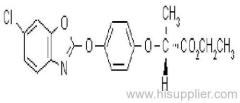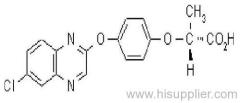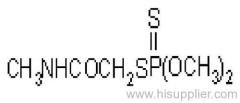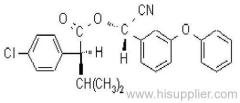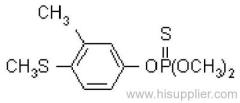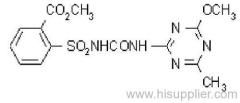
|
Shanghai Skyblue Chemical Co., Ltd.
|
D-Phenothrin
| Place of Origin: | Shanghai, China (Mainland) |
|
|
|
| Add to My Favorites | |
| HiSupplier Escrow |
Product Detail
Non-systemic insecticide with contact and stomach action. Gives rapid knockdown.
Common name: phenothrin; phénothrine
IUPAC name: (for phenothrin): 3-phenoxybenzyl (1RS,3RS;1RS,3SR)-2,2-dimethyl-3-(2-methylprop-1-enyl)cyclopropanecarboxylate (see Composition)
Alt: 3-phenoxybenzyl (?-cis-trans-chrysanthemate
Roth: 3-phenoxybenzyl (1RS)-cis-trans-2,2-dimethyl-3-(2-methylprop-1-enyl)cyclopropanecarboxylate
Chemical Abstracts name: (3-phenoxyphenyl)methyl 2,2-dimethyl-3-(2-methyl-1-propenyl)cyclopropanecarboxylate
Other names: d-phenothrin for (1R)-rich grade
CAS RN: [26002-80-2] (1RS)-cis-trans- isomers; [51186-88-0] (1R)-cis- isomer; [26046-85-5] (1R)-trans- isomer
EEC no.: 247-404-5
PHYSICAL CHEMISTRY
Composition: The common name phenothrin refers to a mixture of (1RS)-cis-trans- isomers. d-Phenothrin contains 93% (1R)- isomers, 75% trans- isomer. Mol. wt.: 350.5; M.f.: C23H26O3; Form: Pale yellow to yellow-brown clear liquid, with a faint characteristic odour. B.p.: >290 ºC/760 mmHg. V.p.: 1.9x10-2 mPa (21.4 ºC). KOW: logP = 6.01 (20 °C). Henry: >6.75x10-1 Pa m3 mol-1 (calc.). S.g./density: 1.06 (20 ºC). Solubility: In water <9.7 ug/l (25 ºC). In methanol >5.0, hexane >4.96 g/ml (25 ºC). Stability: Stable under normal storage conditions. Hydrolysed by alkalis. F.p.: 107 ºC (Pensky-Martens closed test).
APPLICATIONS
Mode of action: Non-systemic insecticide with contact and stomach action. Gives rapid knockdown.
Uses: Used to control injurious and nuisance insects of public health (Acari, Cimex lectularius, Culicidae, Muscidae, Siphonaptera and Pediculus humanus). Also used to protect stored grain.
Formulation types: Aerosol; EC; OL.
Compatibility: Incompatible with alkaline materials.
MAMMALIAN TOXICOLOGY
Oral: Acute oral LD50 for rats >5000 mg/kg.
Skin and eye: Acute percutaneous LD50 for rats >2000 mg/kg.
Inhalation: LC50 (4 h) for rats >2100 mg/m3.
ADI: 0.07 mg/kg b.w. (for d-phenothrin)
Toxicity class: WHO (a.i.) III (Table 5); EPA (formulation) IV
ECOTOXICOLOGY
Birds: Acute oral LD50 for bobwhite quail >2500 mg/kg.
Fish: LC50 (96 h) for rainbow trout 2.7, bluegill sunfish 16 ug/l.
Daphnia: EC50 (48 h) 0.0043 mg/l.
Bees: Toxic to bees.
ENVIRONMENTAL FATE
Soil/Environment: Undergoes degradation by photo-oxidation.




